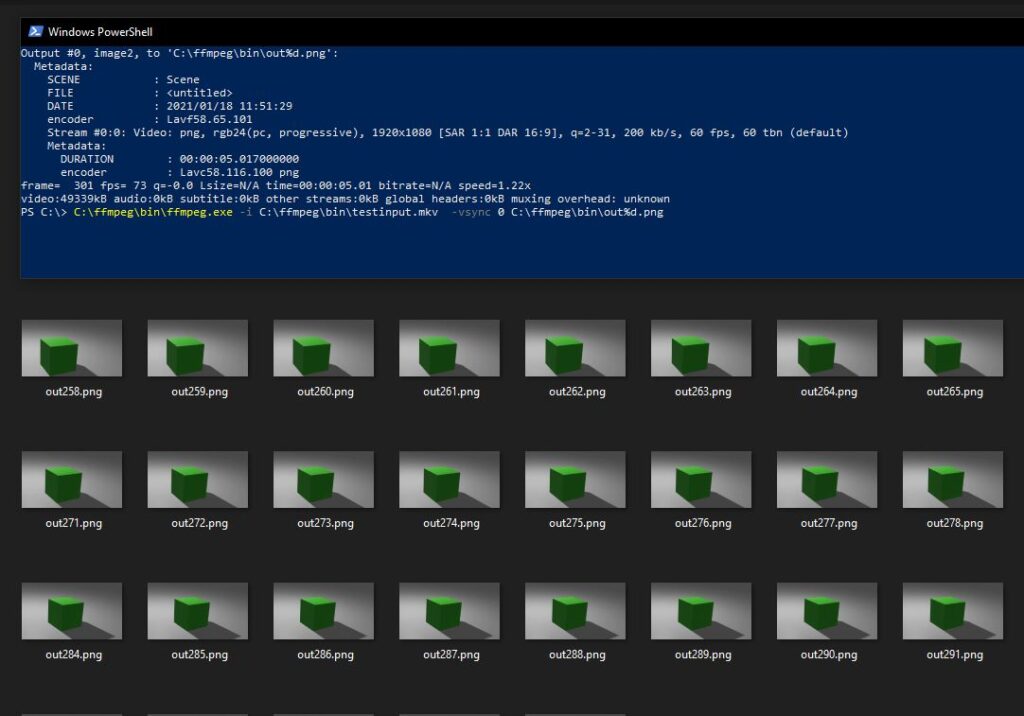
Records stabilization parameters to a file only $ ffmpeg -i input -vf vidstabdetect=stepsize=4:mincontrast=0:result=f -f null.The first pass records stabilization parameters to a file and/or a test video for visual analysis. Video stablization using the vid.stab plugin entails two passes. pass 2 -preset veryslow -threads 0 -b:v 3000k -x264opts frameref=15:fast_pskip=0 video.mkv $ ffmpeg -i video.VOB -acodec aac -b:a 256k -ar 96000 -vcodec libx264 \ threads 0 -b:v 3000k -x264opts frameref=15:fast_pskip=0 -f rawvideo -y /dev/nullĬontainer format is automatically detected and muxed into from the output file extenstion (. $ ffmpeg -i video.VOB -an -vcodec libx264 -pass 1 -preset veryslow \ tune option can be used to match the type and content of the of media being encoded.Īudio deactivated as only video statistics are recorded during the first of multiple pass runs: $ ffmpeg -i video -c:v libx264 -tune film -preset slow -crf 22 -x264opts fast_pskip=0 -c:a libmp3lame -aq 4 output.mkv See the x264 Encoding Guide for more information. Use the slowest -preset you have patience for. Lower values are higher quality 0 is lossless, 18 is visually lossless, and 23 is the default value. General usage is to use the highest -crf value that still provides an acceptable quality. Used when you want a specific quality output.
FFMPEG WINDOWS SCREEN CAPTURE KEYGEN

Ultrafast is far less efficient compression than superfast. Tip: If your computer is able to handle -preset superfast in realtime, you should use that instead of -preset ultrafast. $ ffmpeg -i input -c:v libx264 -preset veryslow -qp 0 -c:a copy outputīoth examples will provide the same quality output. On the opposite end of the preset spectrum is veryslow and will encode slower than ultrafast but provide a smaller output file size: $ ffmpeg -i input -c:v libx264 -preset ultrafast -qp 0 -c:a copy output The ultrafast preset will provide the fastest encoding and is useful for quick capturing (such as screencasting): $ cat f0.VOB f1.VOB f2.VOB | ffmpeg -i - out.mp2 $ ffmpeg -f v4l2 -video_size 640x480 -i /dev/video0 -f alsa -i default -c:v libx264 -preset ultrafast -c:a aac webcam.mp4Ĭoncatenate the desired VOB files into a single stream and mux them to MPEG-2:

To record a video webcam.mp4 from the webcam with audio: Where -video_size specifies the largest allowed image size from the webcam. $ ffmpeg -f v4l2 -video_size 640x480 -i /dev/video0 -c:v libx264 -preset ultrafast webcam.mp4 The following command will record a video webcam.mp4 from the webcam without audio, assuming that the webcam is correctly recognized under /dev/video0: Other codecs can be used if writing each frame is too slow (either due to inadequate disk performance or slow encoding), then frames will be dropped and video output will be choppy.įFmpeg includes the video4linux2 and ALSA input devices that enable capturing webcam and audio input. Here, the x264 codec with the fastest possible encoding speed is used. $ ffmpeg -f x11grab -video_size 1920x1080 -framerate 25 -i $DISPLAY -f alsa -i default -c:v libx264 -preset ultrafast -c:a aac screen.mp4 To take a screencast screen.mp4 with lossy encoding and with audio: Here, the Huffyuv codec is used, which is fast, but produces huge file sizes. $ ffmpeg -f x11grab -video_size 1920x1080 -framerate 25 -i $DISPLAY -c:v ffvhuff screen.mkv To take a screencast screen.mkv with lossless encoding and without audio: Where -video_size specifies the size of the area to capture. $ ffmpeg -f x11grab -video_size 1920x1080 -i $DISPLAY -vframes 1 screen.png See FFmpeg encoding wiki and ffmpeg(1) § EXAMPLES.įFmpeg includes the x11grab and ALSA virtual devices that enable capturing the entire user display and audio input. However you may want to force the number of threads available by the parameter -threads number.

Failing to do so may cause parameters being skipped or will prevent FFmpeg from executing. It is important that parameters are specified in the correct order (e.g.


 0 kommentar(er)
0 kommentar(er)
